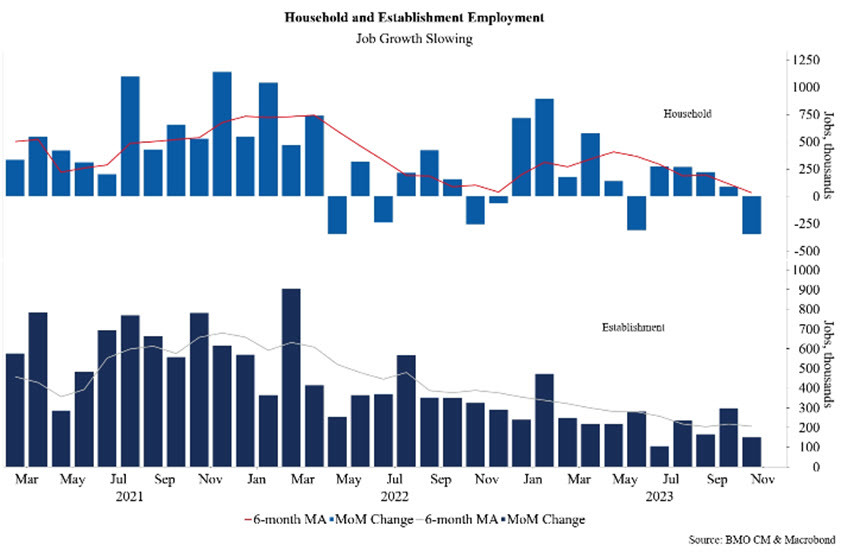Decoding the US Employment Surveys: A Comparison of Household vs. Establishment Data
Introduction
Understanding how different employment surveys in the United States work and comparing their results can provide valuable insights into the state of the labor market. In this article, we will delve into the household survey and the establishment survey, analyzing their findings and highlighting the trends that are currently shaping the employment landscape.
The Household Survey
The household survey is conducted by the U.S. Census Bureau and the Bureau of Labor Statistics (BLS). It involves interviewing individuals in a sample of households to gather information on their employment status. This survey provides data on the total number of employed and unemployed individuals in the country, as well as the labor force participation rate.
The Establishment Survey
On the other hand, the establishment survey is based on responses from businesses and government agencies. It collects data on the number of jobs created or lost in various industries, wages, and hours worked. The establishment survey is considered the more reliable and comprehensive of the two surveys, as it covers a larger sample size and includes information from a wide range of industries.
Comparing the Surveys
Recent data from both the household and establishment surveys show a consistent trend of jobs growth, albeit at a slower pace. The establishment survey has been reporting steady job gains since the recession, while the household survey has shown net job losses since June. This discrepancy can be attributed to different methodologies and sample sizes used in each survey.
On a 6-month moving average basis, the household survey’s payrolls growth has slowed to just 32k, indicating a weakening labor market. Even the establishment survey’s 6-month moving average has dipped to its lowest level since the pandemic, reflecting the broader economic challenges facing the country.
Impact on Individuals
For individuals, the contrasting results of the household and establishment surveys mean a more nuanced understanding of the job market. While the establishment survey may show overall growth in employment, the household survey highlights the struggles that many Americans are facing in finding and maintaining stable jobs. This disparity underscores the need for targeted policies and interventions to support those most affected by economic uncertainties.
Impact on the World
On a global scale, the diverging trends in the US employment surveys could have ripple effects on the world economy. As the largest consumer market, any disruptions in the US labor market can impact international trade, financial markets, and global supply chains. Businesses and policymakers around the world are closely monitoring these developments, as they seek to navigate the evolving economic landscape.
Conclusion
In conclusion, decoding the US employment surveys provides valuable insights into the dynamics of the labor market and the broader economy. By comparing the household and establishment data, we can better understand the complexities of job growth, unemployment, and labor force participation. As the surveys continue to diverge in their findings, it is essential for stakeholders to adapt their strategies and policies to address the evolving challenges facing workers and businesses alike.





